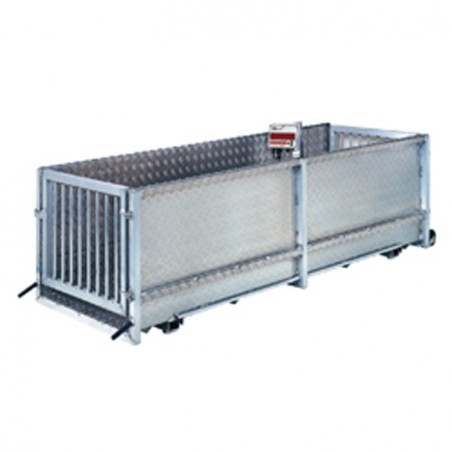Butyrate is a short chain fatty acid produced by microbial fermentation in the large intestine. Sodium butyrate is proved to benefit nursery piglet performance, intestinal development, immune function, and potentially, prevent infection by E. Coli, Enterococcus and Salmonella. However, any beneficial or carry over effect by supplementing sows is not clear in the literature. Three experiments were conducted to evaluate the effect of coated sodium butyrate (CSB) supplementation to peripartal and lactating sows and nursery pigs on lactation performance and nursery growth performance.
In Exp. 1, a total of 43 gestating sows (d 81–92 of gestation) were allotted to 0 (n=15), 500 (n=16), or 1000 (n=12) ppm of CSB supplementation based on breed, parity and body weight (BW), and then fed treatment diets until weaning. In Exp. 2 and 3, a total of 144 weanling pigs (72 pigs for Exp. 2 and 3, respectively) from 0 or 1000 ppm CSB sow treatments in Exp. 1 were allotted within the sow treatment to 0, 500, or 1000 ppm of CSB supplementation in nursery diets based on breed and BW in a multifactorial design for a 35-d growth study. All pigs in Exp. 2 were injected with ovalbumin at weaning and d 14 postweaning as an immune challenge.

In Exp. 1, there were no differences in sow BW, litter size, litter weight, lactation feed intake or milk composition among treatments. However, colostral IgG and IgA concentrations tended to increase quadratically as CSB supplementation levels increased. In Exp. 2, pigs from the 1000 ppm CSB sow treatment had greater BW at d 35, average daily gain (ADG), average daily feed intake (ADFI) and feed to gain ratio (F:G, tendency) than those from the 0 ppm CSB sow treatment. For the nursery treatments, ADG and ADFI (tendency) during the 35-d period increased linearly as CSB supplementation levels increased whereas F:G had a negative quadratic response (tendency). In Exp. 3, F:G for d 0-14 post-weaning tended to be lower (tendency) in pigs from the 1000 ppm CSB sow treatment compared with those from the 0 ppm CSB sow treatment whereas BW, ADG, and ADFI during the 35-d period decreased linearly as CSB supplementation levels increased in the diets.
In conclusion, CSB supplementation tended to increase colostral IgG and IgA concentrations in sows and improved growth performance of nursery pigs under an immune challenge when supplemented in the nursery diet.
Jang, Y. D., Lindemann, M. D., Monegue, H. J., and Monegue, J.S. (2017). The effect of coated sodium butyrate supplementation in sow and nursery diets on lactation performance and nursery pig growth performance. Livestock Science, 195, 13-20. http://dx.doi.org/10.1016/j.livsci.2016.11.005




